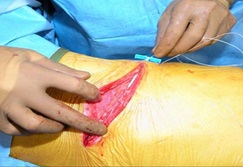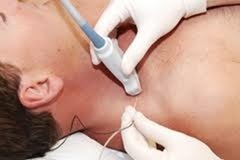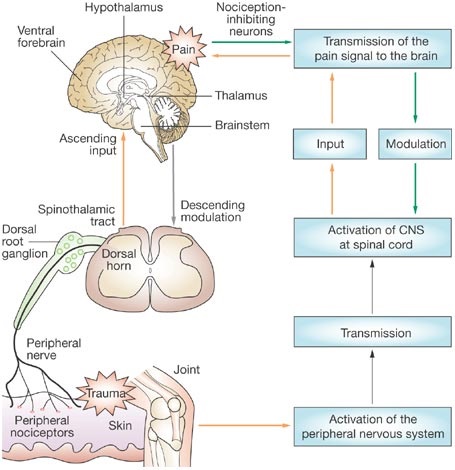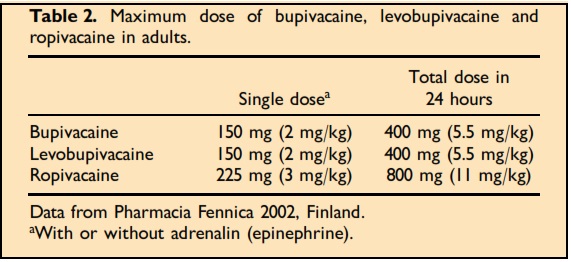General
Significant Reduction in Hospitalization – Faster Healing
The use of continuous regional/local anesthesia via Ambulatory Pain Pumps to deal with postoperative pain had been approved as a superior efficient and safe procedure and is now the standard of care at more and more leading US healthcare facilities.
The use of anesthetic medication other than opiates resulted with faster healing and with high patient satisfaction.
It enables the vital body systems to operate at "normal mode" and eliminates the opiates side effects.
The use of Pain Pump that postoperatively administrate continuously local/regional anesthesia (sub-muscles/subcutaneous) resulted with dramatically reduction in hospitalization; in some cases, enables to convert procedures involved with several days hospitalization to an ambulatory procedure.
The postoperative Pain Pumps are fully ambulatory devices that are connected to the patient at the end of the surgery or at the recovery room.
Typically, the pumps are used during three to four days post-OP.
Pump is carried on the patient by the use of designated carrying pouch.
A. Continuous Regional/Local anesthesia Therapies
1. General
During the therapy, anesthetic medication is continuously delivered into or around the surgical wound site or close proximity to a
peripheral nerve that controls the organ that been treated by the surgery.
Typically, the route of administration is subcutaneous and/or intramuscular and/or perineural
The therapy isn't an IV (intra venues), the medication is delivered in to the nerves via diffusion.
2. Two major procedures are used
> Continuous Wound Infiltration (CWI);
the anesthetic medication is delivered into or around the surgical wound site.

> Continuous Peripheral Nerve Block (CPNB); the anesthetic medication is delivered close proximity to a peripheral nerve that
controls the organ that been treated by the surgery.


Activation of peripheral pain receptors (also called nociceptors) by noxious stimuli generates signals that travel to the dorsal horn of the spinal cord via the dorsal root ganglion. From the dorsal horn, the signals are carried along the ascending pain pathway or the spinothalamic tract to the thalamus and the cortex. Pain can be controlled by pain-inhibiting and pain-facilitating neurons. Descending signals originating in supraspinal centers can modulate activity in the dorsal horn by controlling spinal pain transmission. Abbreviation: CNS, central nervous system.
Source: Nature Clinical Practice Rheumatology
3. Typically, CWI is used to address postoperative pain following surgeries at the patient body while CPNB is uses to address
postoperative pain following surgeries at the patient limbs.
(There are some "typical exceptions", like; CWI is used to address postoperative pain following veins harvest at lower limbs and
sometime used following Total Knee surgery and the use of TAP Block to address postoperative pain following abdominal surgery).
4. Factors Influencing on the Therapy Efficiency
There are three main factors that influence the therapy efficiency
> Catheter position
* CWI
To be positioned along the entire incision length (other than partial).
* CPNB
The position of the catheter distal end in relate to the nerve cord.
> Medication:
Type, Concentration, Volume (therapy duration)
> Medication Spread;
* CWI
Efficient pain block is achieved when sufficient medication volume is "accessible" to all tissues along the incision (i.e. correlation
between
the incision length and the infusion flow-rate).
* CPNB
Efficient pain block is achieved when at-least 180°of the targeted nerve cord is surrounded with the medication at about 10mm segment,
while profound pain block is achieved with 360° medication surrounding.
5. Controlling of the Pain Therapy via Pain Pump
> Flow-Rate
Influences the medication saturation and has some influence on the medication spread.
> Volume
Influences the therapy duration (for a certain flow-rate)
> Bolus device features (applicable for pumps with PCA option only)
* Volume
* Lockout time
> Length of catheter infusing segment (applicable for CWI only).
6. Maximum Dose

Important Note
The data and information concerning Maximum Medication Dose is based on public domain publications and should serve as general indication only and not as instructions and/or recommendations!
This data isn't a scientific data!
It is strictly the responsibility of the physician to make the any decisions concerning the medication infusion therapy!
B. MFS carrying two types of pumps lines;
SmartBlock™ , designated mainly for Continuous Peripheral Nerve Block (CPNB) and Epidural.
SmartInfuser PainPump™, designated mainly for Continuous Wound Infiltration (CWI)
Both brands are 100% mechanical pumps, with high versatility level (feature wise) and with fully programmable features that enables the medical team to set each and any of the four important infusion therapy parameters to best match between the individual pain therapy requirements and the pump setting, i.e. medication volume, flow-rate, bolus volume and catheter infusion segment.
General
Significant Reduction in Hospitalization – Faster Healing
The use of continuous regional/local anesthesia via Ambulatory Pain Pumps to deal with postoperative pain had been approved as a superior efficient and safe procedure and is now the standard of care at more and more leading US healthcare facilities.
The use of anesthetic medication other than opiates resulted with faster healing and with high patient satisfaction.
It enables the vital body systems to operate at "normal mode" and eliminates the opiates side effects.
The use of Pain Pump that postoperatively administrate continuously local/regional anesthesia (sub-muscles/subcutaneous) resulted with dramatically reduction in hospitalization; in some cases, enables to convert procedures involved with several days hospitalization to an ambulatory procedure.
The postoperative Pain Pumps are fully ambulatory devices that are connected to the patient at the end of the surgery or at the recovery room.
Typically, the pumps are used during three to four days post-OP.
Pump is carried on the patient by the use of designated carrying pouch.
A. Continuous Regional/Local anesthesia Therapies
1. General
During the therapy, anesthetic medication is continuously delivered into or around the surgical wound site or close proximity to a peripheral nerve that controls the organ that been treated by the surgery.
Typically, the route of administration is subcutaneous and/or intramuscular and/or perineural The therapy isn't an IV (intra venues), the medication is delivered in to the nerves via diffusion.
2. Two major procedures are used
> Continuous Wound Infiltration (CWI);
the anesthetic medication is delivered into or around the surgical wound site.

> Continuous Peripheral Nerve Block (CPNB); the anesthetic medication is delivered close proximity to a peripheral nerve that
controls the organ that been treated by the surgery.


3. Typically, CWI is used to address postoperative pain following surgeries at the patient body while CPNB is uses to address
postoperative pain following surgeries at the patient limbs.
(There are some "typical exceptions", like; CWI is used to address postoperative pain following veins harvest at lower limbs and sometime used following Total Knee surgery and the use of TAP Block to address postoperative pain following abdominal surgery).
4. Factors Influencing on the Therapy Efficiency There are three main factors that influence the therapy efficiency
> Catheter position
* CWI
To be positioned along the entire incision length (other than partial).
* CPNB
The position of the catheter distal end in relate to the nerve cord.
> Medication:
Type, Concentration, Volume (therapy duration)
> Medication Spread;
* CWI
Efficient pain block is achieved when sufficient medication volume is "accessible" to all tissues along the incision (i.e. correlation between
the incision length and the infusion flow-rate).
* CPNB
Efficient pain block is achieved when at-least 180°of the targeted nerve cord is surrounded with the medication at about 10mm segment, while profound pain block is achieved with 360° medication surrounding.
5. Controlling of the Pain Therapy via Pain Pump
> Flow-Rate
Influences the medication saturation and has some influence on the medication spread.
> Volume
Influences the therapy duration (for a certain flow-rate)
> Bolus device features (applicable for pumps with PCA option only)
* Volume
* Lockout time
> Length of catheter infusing segment (applicable for CWI only).
6. Maximum Dose

